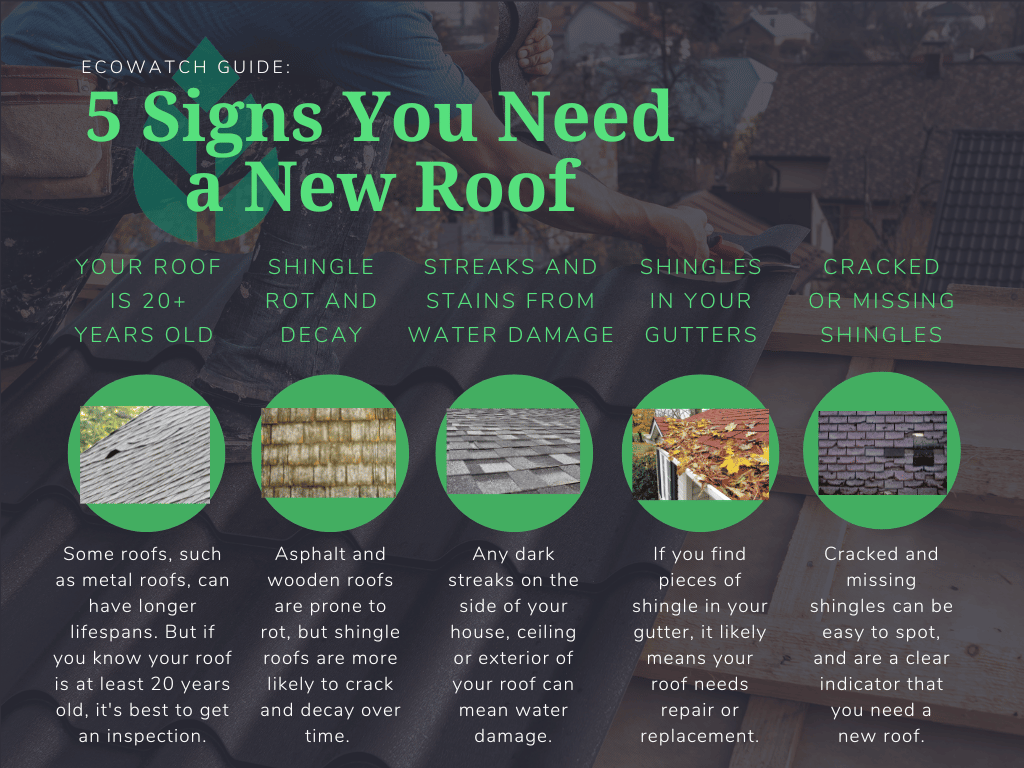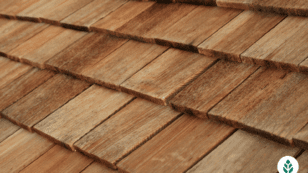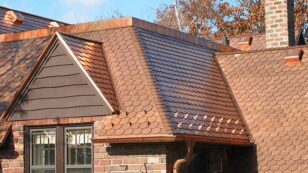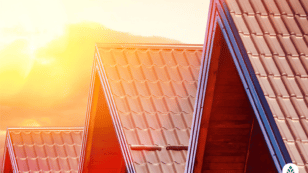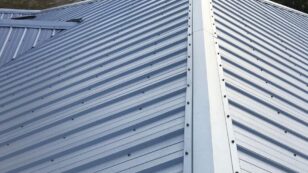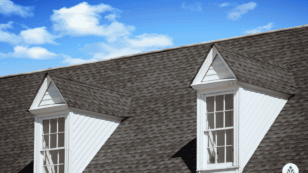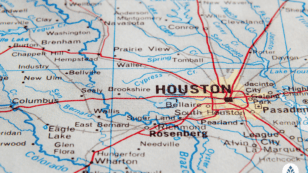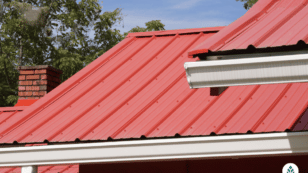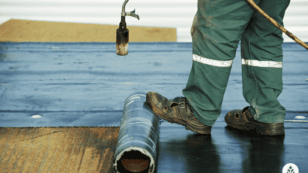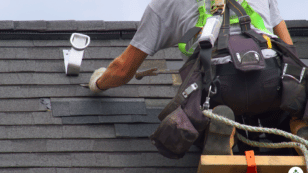
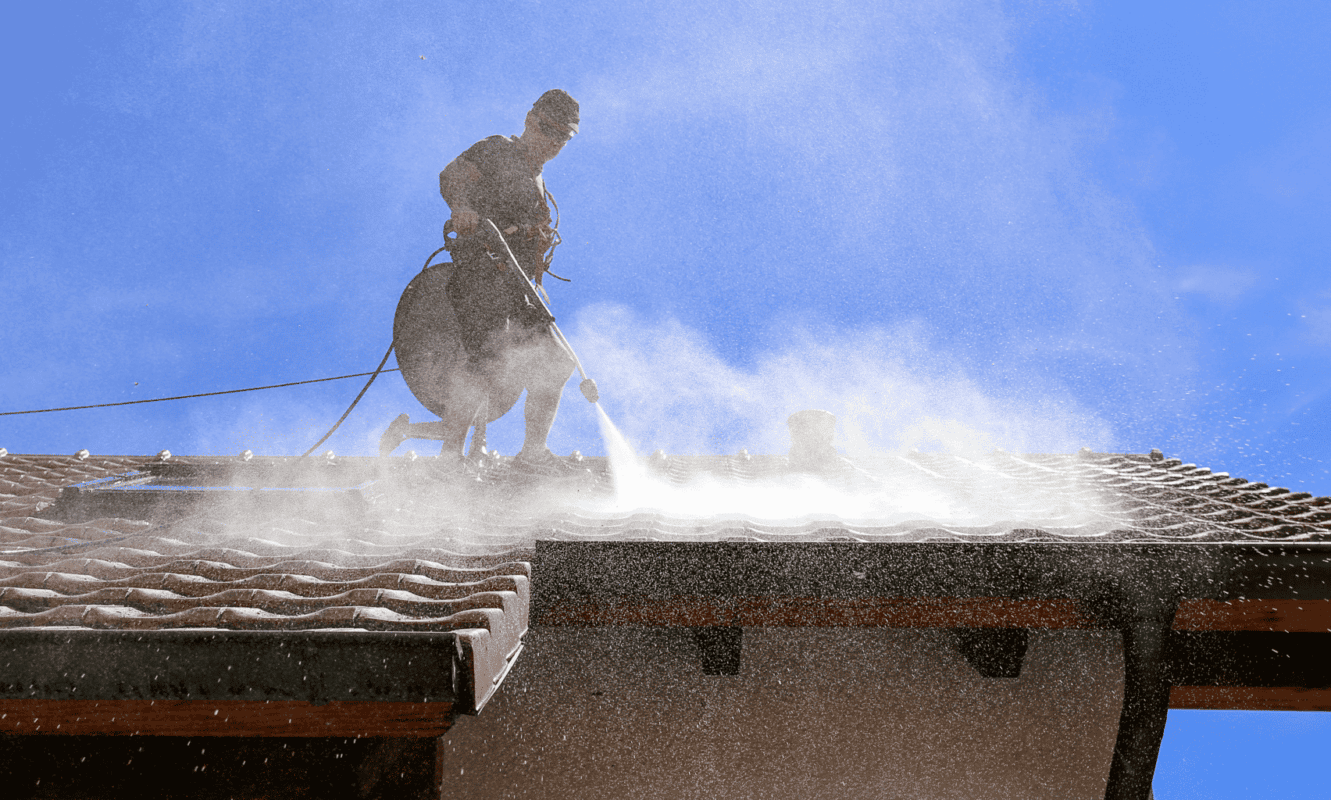
Roof Cleaning Costs (2024): Professional vs DIY
Here’s what we’ll cover in this guide:
- What does professional roof cleaning cost?
- What are the different roof cleaning methods?
- What factors affect the cost of roof cleaning services?
Each product and or company featured here has been independently selected by the writer. You can learn more about our review methodology here. If you make a purchase using the links included, we may earn commission.
Your roof gets exposed to all kinds of weather and falling debris. Over time, debris on your roof can cause discoloration that detracts from your home’s curb appeal. Even worse, a roof that isn’t maintained can grow algae and moss, both of which are unsightly and can lead to severe property damage. Unmaintained roofs require expensive professional roof repair and roof replacement more often as well.
In this guide, we’ll explain how professional roof cleaning services can help prevent these problems, how much it costs to get your roof cleaned and the different roof cleaning services you can choose. We’ll also discuss some factors that can bring your prices for roof cleaning above or below the national average.
How Much Does Roof Cleaning Cost?
The price you’ll pay for professional roof cleaning varies quite a bit. The price is usually based on the size of your roof, the cleaning services you need, the condition of your roof, the type of products you want to be used and more. However, it’s useful to have a baseline cost so you know generally what you’ll be spending.
The average cost to clean your roof is around $400 total, and most homeowners pay between $250 and $650. Since your roof size is one of the most important factors to consider when pricing out roof cleaning services, you can get a better idea of your cost by assuming you’ll pay between $0.15 and $0.70 per square foot.
Roof Cleaning Prices Vary by Cleaning Method
There are several ways to go about cleaning your roof, and the method your roof cleaner uses can affect the pricing. The cleaning method should be decided based on the type of roof you have. Below is a quick list of which cleaning methods are suitable for each roofing material.
- Low-pressure power washing: Clay tile roofs, metal roofs, slate roofs
- High-pressure power washing: Metal roofs
- Chemical wash: Asphalt shingle roofs, clay roofs, metal roofs
- Soft wash roof cleaning: Clay tile roofs, metal roofs, slate roofs, asphalt roofs
- Manual moss removal: Clay tile roofs, metal roofs, slate roofs, asphalt roofs
It’s important to remember that many of these techniques — specifically those that involve pressure washing at any intensity — should only be carried out by professionals. Doing this type of roof cleaning incorrectly can easily lead to roof damage, voiding your roof warranty or causing other issues.
We’ll also include the average costs for these cleaning methods below for a 1,700-square-foot roof:
- Low-pressure power washing: $0.30 to $0.70 per square foot, or an average of around $930
- High-pressure power washing: $0.15 to $0.60 per square foot, or an average of around $680
- Chemical wash: $0.15 to $0.30 per square foot, or an average of around $340
- Soft wash: $0.30 to $0.80 per square foot, or an average of around $650
- Manual moss removal: This is the most expensive type of cleaning, costing between $0.60 and $1.00 per square foot, or an average of around $1,200
Along with washing your roof, roofing exerts, such as Oberon, CEO of Very Informed¹, want homeowners to know that “It is important to clean your gutters on a regular basis, as clogged gutters can lead to water damage on your roof.” This can easily be done by the homeowner but can also be completed by a professional.

Power Home
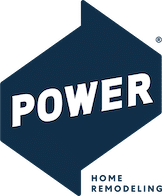
Average cost
Pros
- Positive industry reputation
- Lifetime or lengthy warranty
- 10+ years of experience
- Positive customer reviews
- Uses eco-friendly materials
- Well-trained, certified installers
- Variety of roofing styles available
Cons
- Limited variety of roofing materials
- Short or nonexistent warranty
- No financing information available
- Expensive
- Little information available on company website

Erie Home
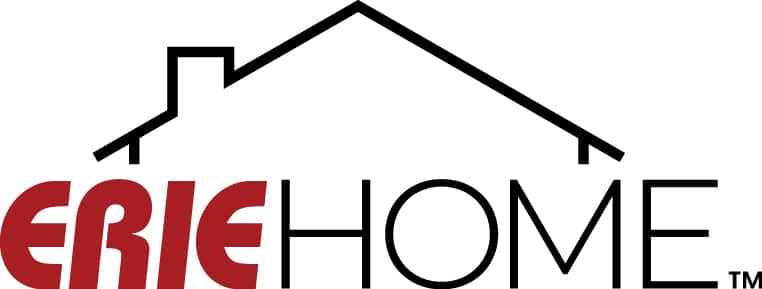
Zero Down - 18 months same as cash with minimum monthly payment
Average cost
Pros
- Lifetime or lengthy warranty
- Widespread availability
- 10+ years of experience
- Positive customer reviews
- Uses eco-friendly materials
- Financing options available
- Well-trained, certified installers
- Uses durable materials meant to last
- Variety of roofing styles available
Cons
- Limited variety of roofing materials
- Expensive

Aspen Contracting

Average cost
Pros
- Positive industry reputation
- Lifetime or lengthy warranty
- Widespread availability
- 10+ years of experience
- Positive customer reviews
- Financing options available
Cons
- Little information available on company website
Eco-Friendly Washing Your Roof
One thing you should be aware of when getting roof cleaning services completed is how the method being used affects the environment. In areas where severe drought is common, for example, pressure washing often isn’t advisable due to the high consumption of water.
Many companies also use chemicals and algaecides to clean roofs, but these will run off your roof, soak into the ground and can be detrimental to plants and trees on your property. They can also drain into groundwater, which can pollute drinking water supplies.
When you’re choosing what cleaning method your roof needs, we suggest thinking about the safety of each option before moving forward. Manual moss removal will usually cost more than loading up your roof with chemicals, but you’ll also have a much less negative impact on the environment.
In areas where drought isn’t an issue and your roof style allows for it, low-pressure washing and high-pressure power washing can be good solutions for removing roof stains, algae and debris from your roof.
A soft wash uses low-pressure water — usually barely more aggressive than a garden hose — in combination with eco-friendly roof cleaners. This can be a great option for those who are concerned about using harsh chemicals but have a roof style that doesn’t allow for safely using high-pressure power washing.
Pressure Washing Roof Costs
Power washing is a great method for removing algae, stains and debris from your roof, but it’s not always a suitable option for your home. Depending on the style of roof you have, the pressure can remove protective coatings, damage the roof material, void your roof warranty or promote leaking in some cases if not done properly.
Especially as more homeowners opt for light-colored roofs, power washing and cleaning will become important. Todd Miller², President of Isaiah Industries and a roofer with more than 30 years of experience, is an advocate for more efficient roofing but knows that “in many areas light colored roofing quickly gets dirty and turns gray.”
Below, we’ll include some information about the three different kinds of pressure washing that are available as roof cleaning services.
High-Pressure Power Washing
High-pressure power washing uses around 2,500-plus psi (pounds per square inch) to forcibly remove debris, caked-on dirt, algae, stains and other debris from your roof. This is the most abrasive method for cleaning your roof, which is why it’s only suitable for some roof styles including tile roofs. It can cause these issues for different roof types:
- Asphalt roof: Damages shingles, removes roof grit and granules, contributes to leaks, voids your roof warranty
- Clay roof: Removes protective coating, make tiles more porous, promotes roof leaks, cracks roof tiles, voids your roof warranty
- Slate roof: cracks slate tiles, voids your roof warranty, contributes to roof leaks
- Metal roof: Generally safe to use
The average cost for high-pressure roof washing is around $0.45 per square foot. It should be noted that this method is not recommended for DIY roof cleaning, as it can damage roofing if not done properly.
Low-Pressure Power Washing
Low-pressure power washing usually means a psi under 1,000, which is much less abrasive on your roof material and is, therefore, suitable and safe for use on more roof styles. Since low-pressure power washing isn’t as damaging as high-pressure washing, it can be used safely on more types of roofing.
Low-pressure power washing can still sometimes void your roof warranty, and it still has the potential to damage asphalt roofs, clay roofs, and slate roofs. However, when carried out by professional roof cleaners, it’s possible to use low-pressure power washing safely on most roof types.
Since the pressure is lower, the job takes longer to complete and costs more per square foot than high-pressure power washing. The average cost for this roof cleaning method is around $0.50 per square foot, but prices can reach up to around $0.70.
Soft-Pressure Power Washing
Soft-pressure power washing uses an even lower pressure than low-pressure power washing, usually somewhere below 500 psi. In some cases, the pressure could be just a little higher than you’d get from a garden hose.
How Roof Cleaning Costs Are Influenced by Roof Size
One of the most significant factors when estimating your roof cleaning costs is the size of your roof. Larger roofs will naturally take longer to clean, which means the labor costs will be higher.
Soft-pressure power washing isn’t the best for removing stains and algae from your roof, but it’s preferable to the other methods if you have these roof styles:
- Clay tile roofs
- Slate roofs
- Asphalt shingle roofs
- Flat roofs
- Rubber roofs
- Concrete tile roofs
The low pressure of the water ensures that the roofing material doesn’t get damaged during the cleaning process. It’s also ideal for cleaning your roof without voiding the warranty, which is a major concern for many homeowners.
To make the process a bit more effective, soft-pressure power washing is usually used in combination with some kind of chemical wash to remove stains and algae or manual moss removal.
Lastly, although soft-pressure power washing is significantly safer for your roofing material than the other power washing methods, it’s still recommended only for professional roofing contractors. Not only is it dangerous to get up on your roof by yourself, but using the pressure washer improperly can still lead to a damaged roof or water getting under your roofing tiles and leading to leaks.
Costs to Clean Your Roof Can Vary by Size and Type of Roof
The price ranges for roof cleaning services mentioned above are so wide for many reasons. When calculating the cost of roof cleaning services for your home, you’ll need to take a few key things into consideration. These include:
- The type of roof you have
- The resiliency of that roofing material to different cleaning methods
- Your roof’s square footage
- The complexity of your roof style
We’ll explain how some of these factors affect your pricing for roof services below.
How Roof Type Affects Cleaning Prices
One of the most important things to consider when estimating the cost of roof cleaning services for your home is the type of roof you have.
First, some cleaning methods aren’t suitable for specific roofing materials. As mentioned above, high-pressure power washing can easily damage asphalt roofing shingles, clay roof tiles, slate roof shingles, and more. It’s usually reserved only for metal roofs.
High-pressure washing makes roof cleaning fast and relatively straightforward, so you might find yourself paying less overall if you can opt for this method for your metal roof.
Second, an asphalt roof or clay roof might require manual moss removal, which is quite time-consuming, followed by a soft wash, which takes far longer than high-pressure washing. These roof types typically cost more to clean, primarily because less abrasive methods need to be employed.
How Roofing Material Influences the Cleaning Process
Some roofing materials are safe to walk on, while others can be challenging or even dangerous.
For example, an asphalt roof with an average pitch is relatively safe and easy to walk on, even when it’s wet from power washing or soft washing. This is typically the most cost-effective roofing material to have cleaned because it doesn’t require any special safety equipment or a higher level of caution.
Clay tiles are more dangerous to walk on, and care must be taken not to crack the tiles. A metal roof can also be dangerous and slick when it’s wet. Roof cleaners addressing these types of roofs will usually require harnesses and additional safety equipment, and they’ll need to take more time to do the job carefully, so prices tend to be a bit higher for these materials.
How Roof Cleaning Costs Are Influenced by Roof Size
One of the most significant factors when estimating your roof cleaning costs is the size of your roof. Larger roofs will naturally take longer to clean, which means the labor costs will be higher.
Many roof cleaning companies will provide a per-square-foot estimate, which means larger roofs will always cost more, regardless of the cleaning method employed.
Just as an example, using the average cost for roof cleaning using high-power pressure washing — around $0.45 per square foot — would cost around $450 for a small, 1,000-square-foot roof. Cleaning an average 1,700-square-foot roof using the same method would cost around $765.
How Roof Style Affects the Cost for Roof Cleaning
Finally, you’ll need to consider the style and complexity of your roof to estimate your roof cleaning prices accurately.
First, multi-level roofs can cost more because additional time must be taken to navigate the levels and bring equipment up to where it’s needed. Roof cleaning professionals might also need additional safety equipment for second-level roofs, which can make the job take longer and increase labor costs.
If you have a simple roof style that’s easy to navigate, your costs will generally be lower. The roof styles below have just a few planes that won’t complicate the job:
- Gable roof
- Hipped roof
- Flat roof
- Mansard roof
- Shed roof
If you have a roof that is made more complex with multiple gables or dormers, the cleaning process will naturally take a bit longer and can be more expensive because of increased labor costs.
Finally, some roof styles have steep pitches that make navigating the roof more dangerous. Gambrel roofs and steep gable roofs typically require more safety equipment. You might need to pay extra if the slope of your roof requires the use of roof harnesses, roof ladders, roof jacks or other equipment.
Locations Impact on Roof Cleaning Costs
The cost of your roof cleaning services will also vary based on where you live, the supply of roof cleaning services and the demand for those services.
For example, it’s usually more expensive to get roof cleaning done in rural areas because the companies that offer this service will have far less competition.
Additionally, rural and suburban areas have greater tree coverage. More tree coverage means more debris falling on your roof that contributes to the need for roof cleaning. Shaded areas are also more prone to moss growth, which is often what necessitates roof cleaning in the first place.
You’ll also need to consider the demand for roof cleaning services in your area. If you live in an area with above-average rainfall or snowfall, your roof will likely show signs of aging more quickly than in sunnier areas.
Roof cleaning is also usually in higher demand in areas where cloudy days are prevalent or where humidity is high. These conditions can promote moss growth on your roof, which is one of the more common reasons homeowners hire roof cleaning services.
Roof Moss Removal Cost and Prevention
Since roof moss is usually more unsightly than dirty or stained roofing as well as more damaging to your roof, it’s the leading reason for calling roof cleaning services.
Roof moss usually grows in areas of shaded roofs, so it’s most common on homes that have tree coverage. However, particularly humid areas and those that experience heavy or frequent cloud coverage can also be prone to roof moss. Moss grows on organic debris buildup that accumulates naturally on your roof and only in the presence of moisture.
Removing moss almost always requires quite a lot of manual work. For some roofs, scraping or pulling the moss off by hand is possible, but the best tools for doing so can also damage some roofing materials. Instead, some roof cleaning professionals will use the following techniques for removing roof moss:
- Apply an algaecide or chlorine bleach to the roof
- Add water to the roof if a powdered algaecide was applied
- Wait for the chemicals to kill the moss and algae
- Manually remove the dead material
The average cost to have roof moss removed is around $1,200 for a 1,700-square-foot roof. Prices per square foot typically range from $0.60 to $1.00.
Your price could be higher if you choose to use eco-friendly moss killers, which we highly recommend. Liquid bleach and other harsh chemicals can not only kill your grass or flower beds below your roof when they run off, but they can also be harmful to the environment.
There are some eco-friendly cleaning solution options available, like Dawn dish soap, baking soda and vinegar or a commercial roof cleaner that is approved by the U.S. Environmental Protection Agency (EPA) and deemed at least relatively safe.
These products can take longer to work and might require more physical moss removal or more trips to your home to complete the process., so they typically cost more than more harmful and abrasive roof cleaning products.
How to Prevent Roof Moss
Since removing moss from your roof is so time-consuming, expensive and potentially harmful to the environment, preventing roof moss from growing is typically a better option than waiting for it to overtake your roof and calling for cleaning services. There are a few things you can do to reduce the risk of roof moss and save money in the process.
First, try to avoid planting trees near your home. Trees create shade and can boost your home’s energy efficiency, but the shade also means they’ll increase the likelihood of roof moss growth.
If you already have mature trees near your home, trim them back away from your roof to prevent them from touching and holding moisture against the roofing materials. This will help keep moisture to a minimum and will prevent moss from taking hold.
Second, get roof cleaning services done at least once per year. Moss grows where organic material is already present. If you carry out roof and gutter cleaning to remove tree debris and other organic matter from your gutters and roof regularly, moss, lichens and mildew will be less likely to grow.
Third, installing metal roofing strips is an option, although it’s not particularly eco-friendly. These strips contain copper or zinc in most cases, which slowly gets washed away and treats your roof each time it rains. These metals can be harmful to the environment, so we don’t particularly recommend these unless you have severe roof moss issues.
You can also consider algae-resistant roof shingles. These shingles are impregnated with zinc or copper, so they work similarly to metal strips. This is by far the most expensive option, as it requires that you install a new roof. However, it’s quite effective, despite not being eco-friendly.
Finally, you can keep up with cleaning yourself. Simply adding a natural degreaser to your roof and spraying it down with a garden hose once per season can help remove organic material that promotes moss growth. In many cases, you don’t even need to get up on your roof to apply these products, and you rarely need any special equipment.
FAQ: Roof Cleaning Costs
Below, we’ll answer the most common questions that homeowners like you have about roof cleaning costs.
The best way to clean a roof is to simply use the right cleaning method and materials. For instance, some roofs, such as metal roofs, can tolerate high pressure washing, but not all roofs can. If you go the professional route, roof cleaning companies will direct you towards the right cleaning products.
You should clean your roof at least once each year, but it’s a good idea to continuously monitor your roof so that you can clean off any debris before it becomes an issue. If you clean your roof at least twice each year, for example, you may be able to avoid repair costs by removing debris as it clutters your roof.
A clean roof can boost curb appeal and attract buyers to your home. Although it may not directly impact the value of your home, a clean roof is definitely noticed by potential buyers. Homeowners who regularly maintain their roof will also notice damage and repair it before it negatively affects a home inspection.

 233k
233k  41k
41k  Subscribe
Subscribe 

